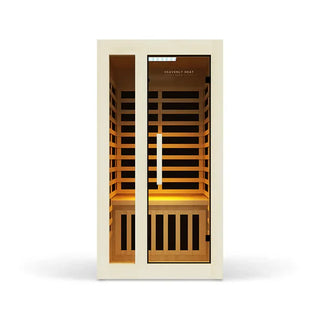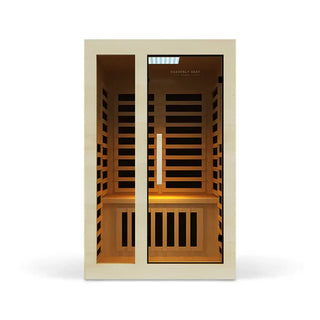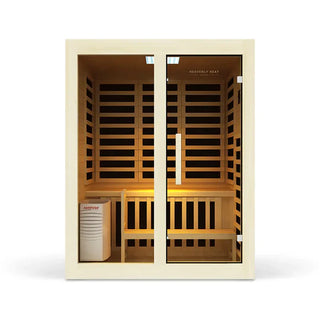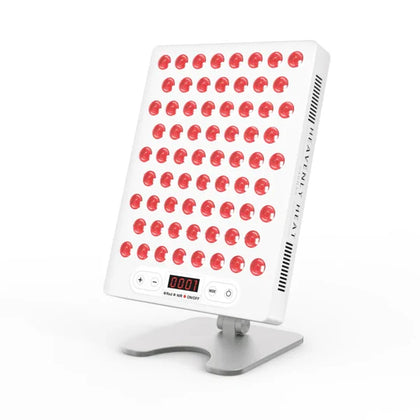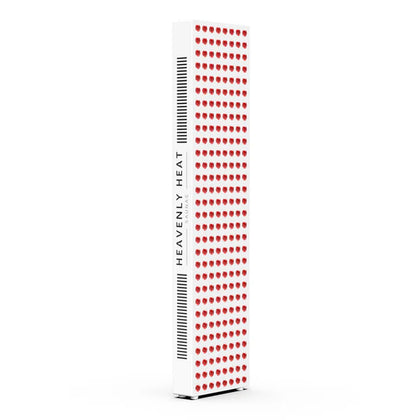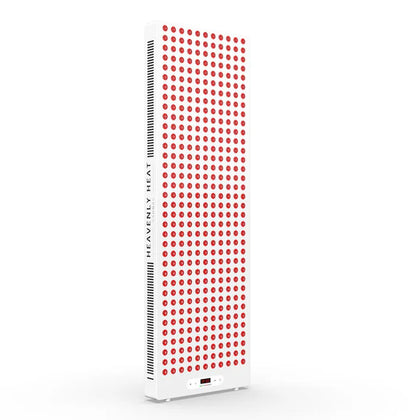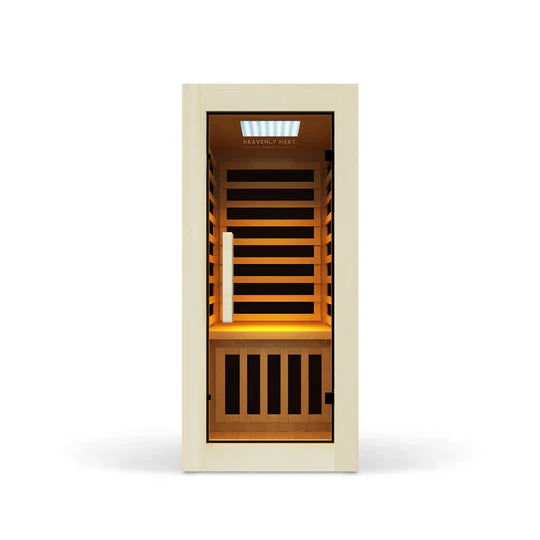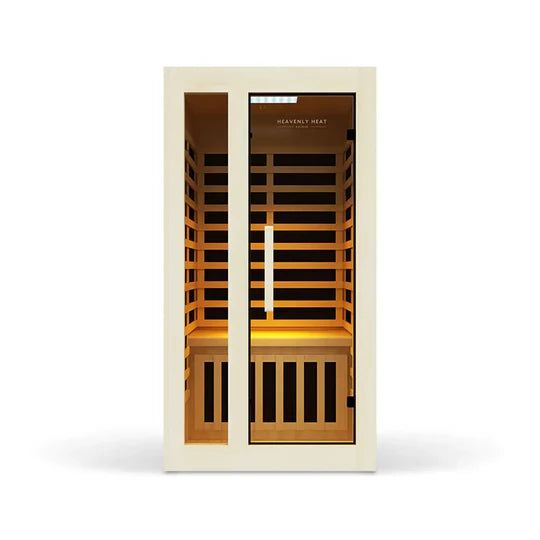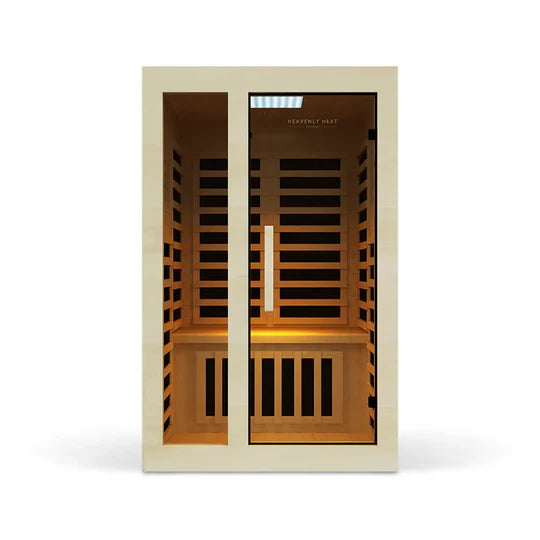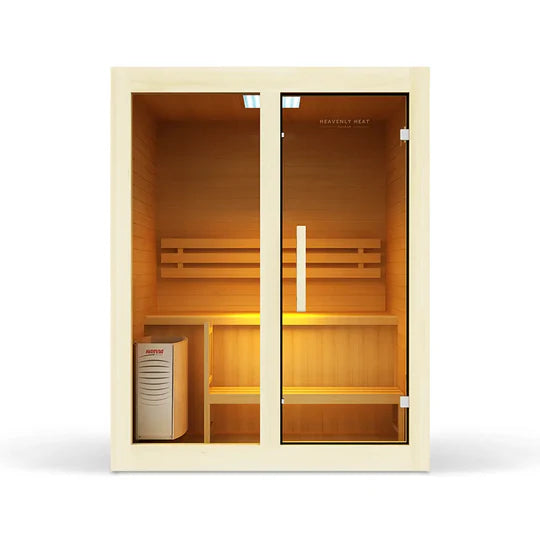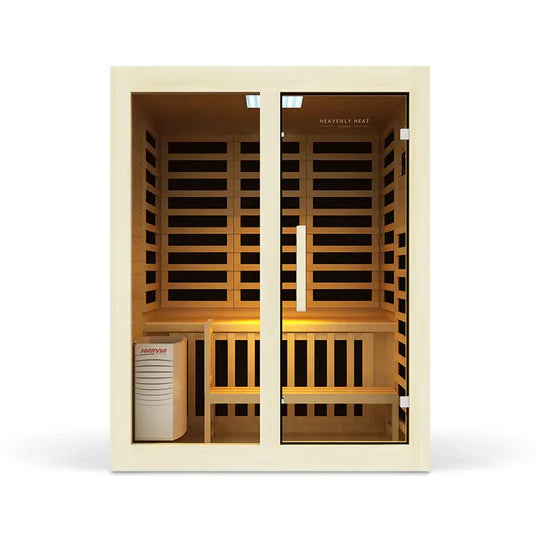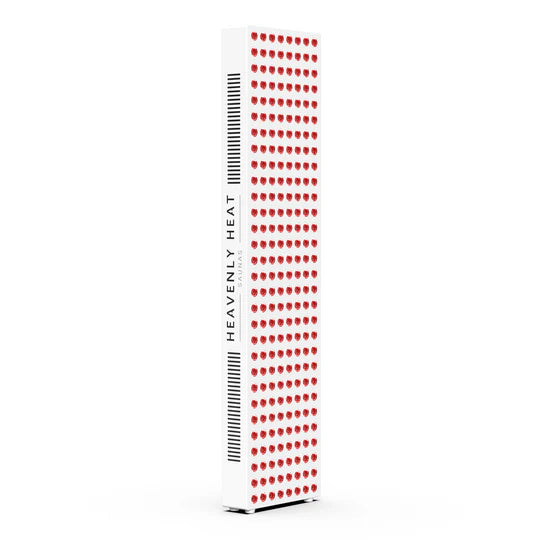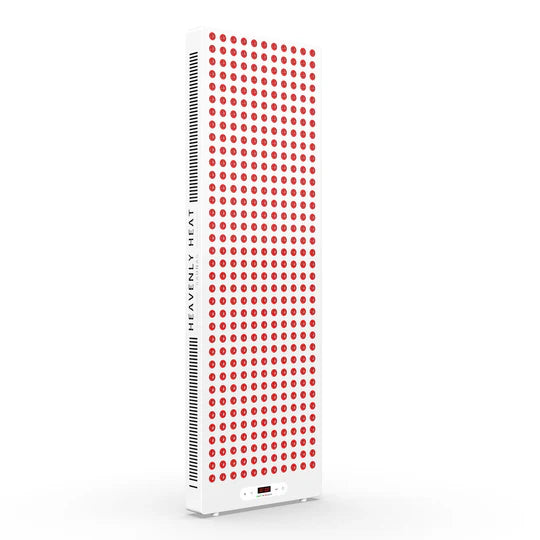Red Light Therapy vs. Tanning Beds: Key Differences & Benefits
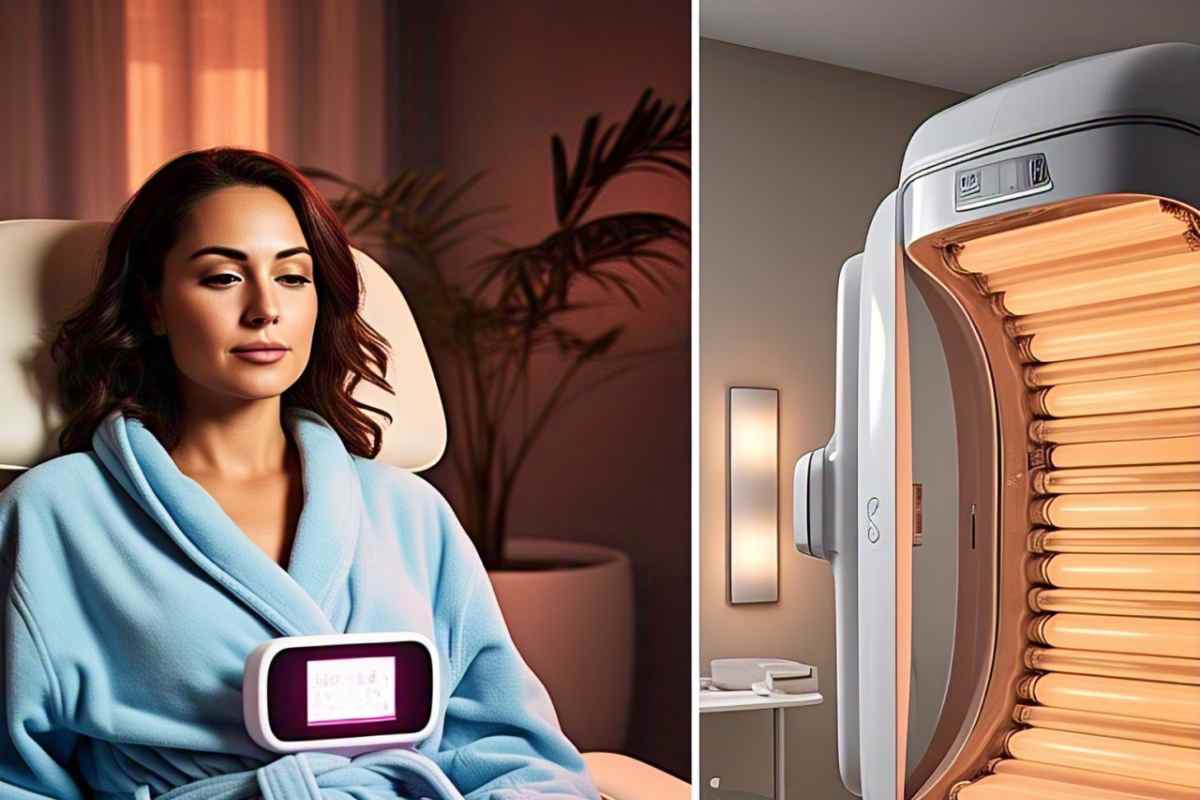
Red light therapy and tanning beds are both popular treatments, but they serve very different purposes.
While red light therapy focuses on skin healing and pain relief, tanning beds are often used for tanning and boosting vitamin D.
Understanding their benefits, differences, and risks can help you make an informed decision. Let's dive into the details!
Table of contents
Key Takeaways
Red light therapy helps heal skin, reduce inflammation, and boost collagen, without tanning your skin.
Tanning beds use UV light to tan your skin but increase the risk of skin cancer and accelerate aging.
Red light therapy is safer, with no UV radiation and fewer risks, while tanning beds can cause DNA damage.
Red light therapy can improve skin texture, speed up muscle recovery, and reduce inflammation, with long-lasting benefits.
Tanning beds offer temporary skin improvement and vitamin D boosts but should be used cautiously due to health risks.
Briefly introduce red light therapy and tanning beds
What is Red Light Therapy?
- Red light therapy and tanning beds may look similar, but they do very different things.
- Red light therapy uses low-level red or near-infrared light to help your skin heal, boost collagen, and reduce inflammation.
- It doesn’t tan your skin.
What are Tanning Beds?
Tanning beds use UV light to darken your skin by triggering melanin production.
Melanin production is responsible for skin pigmentation and provides some sun protection.
Key Difference in Purpose
Red light therapy aims to heal and rejuvenate skin at a deeper level.
Tanning beds focus on tanning the surface of the skin.
Red Light vs. Tanning Beds: Goals and Effects
Red light therapy goes deep into the skin to promote cellular health.
Tanning beds focus on the surface of the skin to create a tan.
The Bottom Line: Healing vs. Tanning
Red light therapy promotes healing and skin health.
Tanning beds are designed for tanning, not healing.
Quick Summary:
Red Light Therapy: Uses red/near-infrared light to heal skin, boost collagen, and reduce inflammation.
Tanning Beds: Use UV light to tan skin by increasing melanin production.
Main Difference: Red light heals; tanning beds darken skin.
Important: They may look similar, but their purposes and effects are completely different.

Key Differences Between Red Light Therapy and Tanning Beds
Wavelength of Light
Wavelength Range
Red light therapy uses light in the range of 620 to 750 nanometers , which is part of the visible light spectrum .
Tanning beds emit ultraviolet (UV) light , typically between 280 to 400 nanometers .
Skin Impact
Red light therapy promotes healing by reaching deeper layers of skin without harming the cells.
Tanning beds increase the risk of skin damage and long-term skin issues .
Purpose
Red Light Therapy: Purpose & Function
Healing & Skin Repair: Red light therapy uses low-level red or near-infrared light to help your skin heal and boost collagen production.
Anti-Inflammatory: It reduces inflammation, addressing skin concerns like acne, wrinkles, and scars.
Tanning Beds: Purpose & Function
Skin Darkening: Tanning beds use UV light to darken the skin by stimulating melanin production.
Surface-Level Impact: Tanning focuses only on the skin's surface to create a tan.
Comparing the Two:
Healing vs. Tanning: Red light therapy promotes skin healing and improves texture, while tanning beds only provide a tan.
Skin Cancer Risk
Tanning Beds and Skin Cancer Risk
Tanning beds significantly increase skin cancer risk due to UV radiation exposure.
How UV Light Damages Skin Cells
UV radiation damages DNA in skin cells, leading to mutations and potential cancer development over time.
Increased Risk of Skin Cancer in Young Users
Research shows those who use tanning beds, particularly from a young age, face higher risks for skin cancers such as basal cell carcinoma, squamous cell carcinoma, and melanoma.
The Link Between Tanning Beds and Melanoma
Indoor tanning before age 35 increases the risk of melanoma by up to 75%.
Expert Opinion on Tanning Beds and Skin Damage
Dermatologist Dr. Rachel Abbott explains that achieving a tan via tanning beds induces DNA damage, making it a risky practice.
Red Light Therapy: A Safer Alternative
Unlike tanning beds, red light therapy does not use UV light and is considered much safer, especially for those with fair skin who burn easily.
Red Light Therapy for Those with Skin Cancer History
Red light therapy is generally safe for individuals with a history of skin cancer, but it's always recommended to consult a healthcare professional for personalized advice.

Aging Effects
UV Damage from Tanning Beds: Tanning beds accelerate skin aging by breaking down collagen and elastin through UV exposure, leading to wrinkles, sagging, and age spots.
Anti-Aging Benefits of Red Light Therapy: Red light therapy, on the other hand, stimulates collagen production, making the skin firmer and more elastic, which helps reduce the signs of aging.
Boosting Results with Skincare Products: By pairing red light therapy with serums containing ingredients like hyaluronic acid, peptides, or vitamin C, you can further enhance these effects—boosting hydration, stimulating collagen, and brightening the skin for a more youthful appearance.
Skin Hydration vs. Dryness: While tanning dries and wrinkles the skin, red light therapy works to hydrate, repair, and rejuvenate it.
Treatment Duration
Session Length Comparison: A typical red light therapy session lasts between 10 to 20 minutes, while tanning bed sessions usually last around 5 to 10 minutes.
Frequency of Use: Red light therapy can be used several times a week due to its gentle nature, whereas tanning beds should be limited to 1–2 times weekly to avoid UV damage.
Time to See Results: Red light therapy takes longer to show visible results, but most users notice improvements after about three weeks of consistent use, and it provides long-lasting skin benefits.
Mechanism of Action
Cellular Energy Boost (Red Light Therapy): "Red light therapy works by stimulating mitochondria, the energy powerhouses of your cells. This boosts the production of ATP, which helps cells repair and regenerate faster.
Pigment Production Trigger (Tanning Beds): Tanning beds stimulate melanocytes, specialized cells that produce melanin, the pigment responsible for skin color.
Light Type and Safety Differences: Red light uses visible, non-UV light, while tanning beds emit UV rays that can damage DNA. That’s why red light therapy is often called non-damaging—it heals rather than harms."
FDA Classification
Red Light Therapy: FDA Status: The FDA classifies red light therapy devices as low-risk, or Class II, and many are FDA-cleared for home or clinical use.
Approval Pathway: 510(k) Clearance: These devices, often labeled as wellness or therapeutic tools, typically receive clearance through a 510(k) submission, which shows they are substantially equivalent to an existing device on the market.
Tanning Beds: Higher Risk Classification: Tanning beds, on the other hand, are classified as Class II or even Class III due to their health risks and are subject to stricter regulations, particularly for minors.
International Regulations on Tanning Beds: In fact, many countries have implemented various legal restrictions on tanning bed advertising and require specific health information for customers, though these regulations differ widely across regions.
No Medical Approval for Tanning Beds: Unlike red light therapy, tanning beds are not approved for any medical benefit.
Summary:
Red light therapy heals and rejuvenates your skin without damage, while tanning beds tan by causing harm through UV exposure. If you're looking to boost skin health safely, go for red light. If you want a tan, know the risks first.
Benefits of Red Light Therapy
Improved Skin Health and Anti-Aging Effects
Deep Skin Healing and Glow: Red light therapy helps your skin heal and glow by reaching deep into your skin layers. It encourages the production of collagen, a protein that keeps skin firm and smooth.
Reduces Fine Lines and Improves Texture: With regular sessions, it can reduce fine lines, improve texture, even out skin tone, and may help reduce cellulite according to some sources.
Youthful Appearance in Weeks: Many users notice their skin looking fresher and younger after just a few weeks. If sagging or loose skin is a concern, red light therapy can help tighten and tone it.
Slows Visible Signs of Aging: It supports skin from the inside out and slows visible signs of aging over time by improving cell repair and elasticity.
A Gentle, Non-Invasive Alternative: Compared to more invasive treatments like microneedling or retinol, red light therapy offers a gentler, non-invasive alternative with no downtime.
Firmer, Smoother Skin Without Side Effects: It effectively promotes smoother, firmer skin while avoiding the discomfort and recovery time often associated with other methods.
Evens Skin Tone and Reduces Sunspots: In addition, red light therapy may help reduce hyperpigmentation and sunspots, promoting a more even skin tone as it stimulates cell regeneration.
Mood and Energy Boosting Effects: It also has the potential to improve mood and energy levels, offering relief for those affected by seasonal affective disorder (SAD).
Potential Eye Health Support: Emerging research also suggests red light therapy may be beneficial for those with macular degeneration, providing support for eye health.
Pain Relief and Muscle Recovery
Relief from Pain and Inflammation: Red light therapy offers real relief for people dealing with pain by improving blood flow and reducing inflammation in sore or injured areas.
Muscle Tension and Recovery Support: Whether you’re experiencing tight muscles after a workout or managing chronic discomfort from conditions like fibromyalgia or arthritis, red light therapy can help soothe the tension.
Natural Arthritis Relief: For those with arthritis, it effectively eases joint pain, swelling, and stiffness, offering a natural alternative to traditional treatments.
Faster Post-Workout Recovery: It’s also great for speeding up muscle recovery after intense exercise. Many athletes use it to recover faster and feel less sore.
Consistency Leads to Better Results: For best results, consistent use—about 10 to 20 minutes per session—is key. Over time, it helps the body heal quicker, with less pain, and greater mobility.
Reduced Inflammation
Inflammation and the Body’s Response: Inflammation is a natural body response, but too much can cause discomfort. Red light therapy helps calm the body’s immune system and reduces overactive inflammation.
Relief for Chronic Conditions: It can be especially useful for people dealing with arthritis or chronic swelling.
Supports Faster Tissue Recovery: By boosting circulation and encouraging healthy cellular activity, it helps tissues recover faster.
Neuroinflammation and Autoimmune Support: In studies on autoimmune conditions like multiple sclerosis, 670nm red light not only eased symptoms but also helped protect nerve cells by reducing harmful inflammation. After exercise, it reduces muscle inflammation and speeds up healing.
Faster Wound Healing
Red light therapy speeds up healing by energizing your cells to repair damaged tissue faster.
It helps wounds close quickly and reduces the chance of scars forming. Whether it's a cut, burn, or sore, red light helps skin rebuild by increasing collagen and encouraging cell turnover.
Enhanced Hair Growth
Stimulates Follicle Energy & Blood Flow: If you’re struggling with thinning hair, red light therapy might help. It works by boosting energy and blood flow to the scalp, which helps revive weak follicles and encourages stronger, thicker growth.
Recommended Treatment Schedule: For the best results, try doing 10–20 minute sessions at home, about 3–5 times a week, to give your scalp consistent support.
Noticeable Hair Density Over Time: Over time, many people notice fuller hair and improved density, especially in areas where hair was thinning or sparse.
Bonus Benefit: Better Eye Health:Red light therapy may also improve eye health and vision, with studies showing improved color and contrast vision by up to 20% in people over 40.
Summary:
Red light therapy is a gentle, non-invasive way to boost your skin, ease pain, reduce inflammation, speed healing, and even grow hair. With consistent use, you’ll notice clearer skin, less discomfort, and more energy making it a powerful addition to your wellness routine.

Benefits of Tanning Beds
Boosts Vitamin D Production
Vitamin D and Bone Health: Tanning beds can provide a quick tan and boost vitamin D levels through UVB rays, which are essential for bone health.
Indoor Tanning Usage Stats (U.S.): Approximately 7.8 million adults in the U.S. still use indoor tanning each year, despite a declining trend in overall usage.
Global Teen Usage Trends: Globally, 6.5% of adolescents used indoor tanning from 2013–2018.
Skin Appearance Benefits: Some people may find that tanning beds temporarily improve the appearance of their skin by evening out tones and reducing the visibility of blemishes, such as acne scars.
Mood and Serotonin Boost: Tanning beds can also improve mood and relaxation by increasing serotonin levels, providing a sense of well-being.
Improves Skin Appearance
Natural-Looking Glow:Tanning beds can give your skin a sun-kissed glow, which some people associate with improved skin appearance.
More Even Skin Tone: For those with scars or blemishes, tanning can make the skin tone appear more even, helping to reduce the visibility of imperfections.
Temporary Relief for Skin Conditions: According to a study reviewing tanning beds as a treatment for dermatologic conditions, they may also temporarily reduce the visibility of UV-sensitive issues like rosacea or vitiligo due to their ultraviolet exposure.
Long-Term Skin Damage Risk: But while the short-term effects might seem appealing, frequent tanning can slowly change your skin’s texture—leading to wrinkles, dark spots, and a leathery look as UV rays wear down the skin’s natural support structure.
Enhances Mood
Endorphin Release: Natural Mood Boost
-
Exposure to UV light from tanning beds triggers the release of endorphins, which are known to elevate mood and improve overall well-being.
Serotonin Increase: A Key to Positive Emotions
-
UV exposure also boosts serotonin levels in the body, a neurotransmitter that plays an essential role in regulating mood and promoting feelings of happiness.
Not a Substitute for Professional Care
-
While tanning beds can enhance mood, they should not replace professional mental health care. They can act as a natural mood enhancer but are not a cure for mental health issues.
Stress Relief: A Relaxing Experience
-
The warm light from tanning beds creates a soothing atmosphere that can help reduce tension and relieve stress, contributing to a more relaxed state of mind.
Hormonal Balance: Triggering Relaxation
-
Exposure to light can stimulate the release of hormones that help the body relax, promoting a sense of comfort and tranquility.
Supports Better Sleep
Tanning beds can help improve sleep quality by influencing melatonin production. Melatonin is the hormone that regulates your sleep-wake cycle, and exposure to UV light from tanning beds can increase its levels. This can make falling asleep easier and improve the overall quality of rest.
Summary:
Using tanning beds may boost your vitamin D, improve skin appearance, lift your mood, and help you relax or sleep better. But remember, while they offer short-term benefits, it’s important to use them carefully to protect your skin’s health.
Which is Safer: Red Light Therapy or Tanning Beds?
Red light therapy is generally considered much safer than tanning beds. Tanning beds expose your skin to harmful UV rays that can cause skin cancer, premature aging, and eye damage.
light therapy, on the other hand, does not use UV light and is widely recommended for its non-invasive, skin-healing properties, making it a safer option overall.
Feature/Criteria |
Red Light Therapy (Good) |
Tanning Beds (Best) |
| Safety | Safe with minimal risks | High risk of skin damage & cancer |
| Skin Healing | Heals and promotes collagen | Temporary improvements |
| Skin Aging | Prevents aging and wrinkles | Accelerates skin aging |
| Pain Relief | Reduces inflammation and pain | No pain relief |
| Long-Term Benefits | Lasting skin health improvements | Temporary benefits, fades over time |
| Skin Cancer Risk | No risk | High risk of skin cancer |
| Treatment Duration | 10-20 minutes per session | 4-8 minutes per session |
Quick Summary:
Red light therapy : Non-UV, safe, promotes skin healing
Tanning beds : Emit harmful UV rays, risk of skin cancer and aging
Does Red Light Therapy Have Any Risks?
Red Light Therapy Safety
Context: General safety of the treatment.
Content: Red light therapy is generally safe for most people.
Potential Short-Term Effects
Context: Temporary side effects that may occur after a session.
Content: Some people may experience mild skin irritation, redness, or dryness after a session.
Long-Term Risks and Overuse
Context: Ongoing risks and consequences of excessive use.
Content: Long-term risks are still being studied. Overuse can lead to headaches, eye strain, sleep problems, or irritability.
Adjusting Treatment for Side Effects
Context: How adjusting treatment can alleviate side effects.
Content: These effects often go away once the treatment is adjusted.
Special Considerations
Context: Special groups who need to be cautious.
Content: People with photosensitivity or certain medical conditions should consult a healthcare provider before using red light therapy.
Quick Summary:
Generally safe for most users
Possible mild side effects: redness, dryness, irritation
Overuse may cause headaches, sleep issues, or irritability
Use with caution if you have photosensitivity
Consult a doctor if you have medical conditions
Do tanning beds have any risks?
Risks of UV Radiation Exposure
Tanning beds expose the skin to harmful UV radiation, increasing the risk of skin cancer, wrinkles, and eye damage.
Accelerated Skin Aging
UV exposure accelerates aging and can cause severe long-term skin damage.
Eye Damage and Cataracts
Even with protective goggles, tanning beds can harm your Eyes , leading to conditions like cataracts.
Skin Allergies and Irritations
Tanning beds can trigger allergic reactions in some people, causing rashes or other skin irritations.
Worsening Pre-existing Skin Conditions
If you already have a skin condition or a history of skin issues, using tanning beds can make things worse by adding more stress to your skin and increasing the risk of serious complications.
Quick Summary:
Tanning beds increase the risk of skin cancer and premature aging
Can cause eye damage , even with goggles
May trigger skin allergies or irritations
Worsens existing skin conditions or sensitivities
How Long Do the Benefits of Tanning Bed Last?
Duration of Tanning Bed Results
-
The benefits of a tanning bed typically last a few days to a week.
The tan gradually fades over time.
Factors Affecting Tan Longevity
-
Skin type, tanning settings, and skincare routines play a role in how long the tan lasts.
Impact of Overusing Tanning Beds
-
Overuse of tanning beds can shorten the duration of your tan due to skin damage.
Tips to Make Your Tan Last Longer
-
Moisturizing daily can help maintain your tan's appearance and extend its life.
Use tan extenders with ingredients like Aloe Vera and hyaluronic acid to keep your skin hydrated and smooth.
Preparing Your Skin for a Long-Lasting Tan
-
Exfoliate before tanning to ensure the tan applies evenly.
Stay hydrated to slow down the natural skin shedding process.
Quick Summary:
Tanning bed results last a few days to a week .
Skin type, tanning settings, and skincare affect longevity.
Overuse can damage skin and shorten tan duration.
Daily moisturizing and tan extenders help maintain the glow.
Exfoliate before tanning for an even application.
Stay hydrated to slow skin shedding and extend your tan.
How Long Do the Benefits of Red Light Therapy Last?
Duration of Benefits
The benefits of red light therapy, like improved skin texture and pain relief, can last for weeks with consistent treatments.
Initial Treatment Frequency
Start with two to three sessions per week for the first couple of months to see noticeable results.
Adjusting Treatment Frequency
Shift to weekly or biweekly sessions after the initial months to maintain the benefits.
Long-Term Effects
With ongoing use, some benefits, such as better skin health and increased energy, may become more lasting over time.
Importance of Consistency
Discontinuing treatment may lead to fading of benefits, so it’s crucial to maintain a regular therapy routine for optimal results.
Quick Summary:
Benefits can last for weeks with consistent use
Start with 2–3 sessions per week for the first 1–2 months
Shift to weekly or biweekly sessions for maintenance
Long-term use may lead to lasting improvements
Stopping treatment may cause benefits to fade
FAQs
Can Red Light Therapy be Used in Combination with Tanning Beds?
Combining red light therapy with tanning beds can be safe if used responsibly. Red light therapy may help reduce skin damage from tanning beds by boosting collagen production and improving skin resilience.
How Does Red Light Therapy Affect Skin Pigmentation Compared to Tanning Beds?
Red light therapy promotes healing and collagen production without darkening the skin. Tanning beds darken the skin by stimulating melanin. Red light therapy can also help with pigmentation issues by aiding skin cell regeneration.
Are There Any Age Restrictions or Recommendations for Using Red Light Therapy or Tanning Beds?
Red light therapy is safe for adults and can be used by those over 18. Consult a healthcare provider if under 18. Tanning beds are not recommended for minors due to the risk of UV skin damage.
How Does the Environmental Impact of Red Light Therapy Compare to Tanning Beds?
Red light therapy has a smaller environmental impact than tanning beds. Tanning beds use more energy and contribute to higher carbon emissions, while red light therapy consumes less power, making it more eco-friendly.

